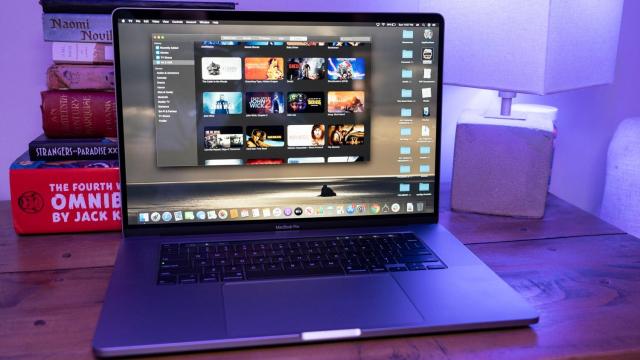Apple could soon turn to OLED. If you’ve been following recent laptop trends, then you know that OLED is the next big thing in display tech. Yes, it’s been around for a few years, but 2022 seems to be the year when PC makers are finally looking to adopt it on a wide scale. Hell, the Lenovo Yoga 9i and HP Spectre x360 16 I recently reviewed both had stunning OLED panels, and Asus is outfitting nearly every laptop, including the more budget-friendly VivoBook line, with OLED.
Apple, however, is behind the curve. The company’s new MacBook Air and MacBook Pro 13 both rely on standard IPS panels. Upgrading to the MacBook Pro 14 and MacBook Pro 16 gets you a miniLED display, a step in the direction of OLED. It seems Apple has realised that to compete, it will need to take the plunge.
The Cupertino tech giant will start shipping MacBooks with OLED displays as early as 2024, says a report from Ross Young. Young is a reliable industry analyst and the CEO of Display Supply Chain Consultants (via MacRumors). In a tweet shared with Super Followers, Young said the upcoming OLED MacBook will likely be a MacBook Air, but could also be a MacBook, MacBook Pro, or a new series. Apple is also expected to bring OLED to new 11-inch and 12.9-inch iPad Pro models in 2024.
“It is looking increasingly likely that Apple will launch a 13.3 OLED notebook in 2024 in addition to the 11[-inch] OLED and 12.9[-inch] iPad Pros,” Young posted to Twitter. “It is expected to be a MacBook Air, but could potentially become a MacBook, MacBook Pro or new category.”
All three OLED products — one laptop and two tablets — will supposedly use a “tandem stack” structure, in which two red, green, and blue emission layers enable increased brightness, improved longevity, and reduced power consumption (by 30%). These OLED displays will likely support LTPO technology for variable refresh rate, or ProMotion, allowing them to shift between 1Hz and 120Hz based on the content on the screen. Apple’s high-end products have ProMotion but only drop to 24Hz.
This wouldn’t be the first time Apple turns to OLED. The iPhone X released in 2017 was the first with OLED and now the entire phone lineup uses the display technology. For now, miniLED is the premiere display tech for MacBooks. While it delivers outstanding brightness (especially when playing HDR content) and excellent reliability, miniLED can’t compete with OLED when it comes to contrast, black levels, and power efficiency.
There are reasons OLED hasn’t taken off in the laptop industry until now. The chief concern is burn-in, or when a static image is permanently retained on the screen. It was a serious problem in the early days of OLED, but newer panels seem to do a better job of preventing this damaging behaviour. Some laptop makers, like Asus, add their own tricks (like enabling a dynamic background after a period of inactivity) for keeping burn-in at bay, while others rely on their suppliers. We’ll be curious about what reassurances Apple will give customers, considering its support page calls burn-in “expected.” LG, the leading OLED supplier for TVs, doesn’t consider burn-in a product defect and does not cover it under warranty, CNET reports.
Eventually, Apple could turn to an upcoming screen technology called micro-LED, which is expected to supplant OLED and mini-OLED by taking the best elements of both. Comprised of microscopic LEDs and inorganic material, micro-LED panels promise brighter images and better colour quality than OLED without the risk of burn-in. Apple, for what it’s worth, purchased micro-LED producer LuxVue in 2014 and is said to be using the screen technology for its long-rumoured mixed reality headset.
micro-LED panels won’t be affordable for some time, so Apple could opt for OLED to act as a temporary bridge between LED and micro-LED if this latest report turns out to be accurate.
